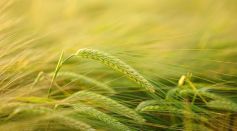ENVIRONMENT & CLIMATE
Dogs, Why Do You Bury Bones?

Sahara Desert Experienced Snow For the 4th Time in 42 Years!
Indoor Vertical Farms Can Also Feed Livestock
Dreaded Bobbit Worm Lair Discovered
World's Richest Person Elon Musk Is Offering $100M Prize for Best Carbon Capture Technology
Expect Trillions of Brood X Cicada To Invade the US After Hibernation For 17 Years
Abnormal Coat Patterns in Zebras Show Troubling Signs of Species' Future
On Making Flapping Drones: Understanding How Butterflies Fly Will Be Helpful
Male Praying Mantis Developed A Mechanism To Avoid Decapitation After Mating

Look! Geologist Finds an Incredible Cookie Monster Rare Rock Worth $10,000
Early Money: Archaeological Discovery Shows Ancient European "Standardized Bronze Objects"

Lab-Grown Plants: MIT Makes Better Alternatives to Forestry and Farming
Microscopic Bubbles Can Tell the History of Earth's Massive Volcanic Eruptions
Catnip Put Cats in a Euphoric State And Also Ward Off Mosquitoes
Most Popular

Will Earth's Magnetic Poles Flip Next? Magnetic Pole Reversal Explained Through Cutting‑Edge Magnetosphere Science

How Lightning Science Reveals Why Charged Storms Are Rising with Global Warming Effects

Relativity Time Dilation Explained: The Physics of Time and Why It Moves Differently in Space

Earthquake Magnitude vs Intensity: Key Differences Explained for Accurate Measurement




